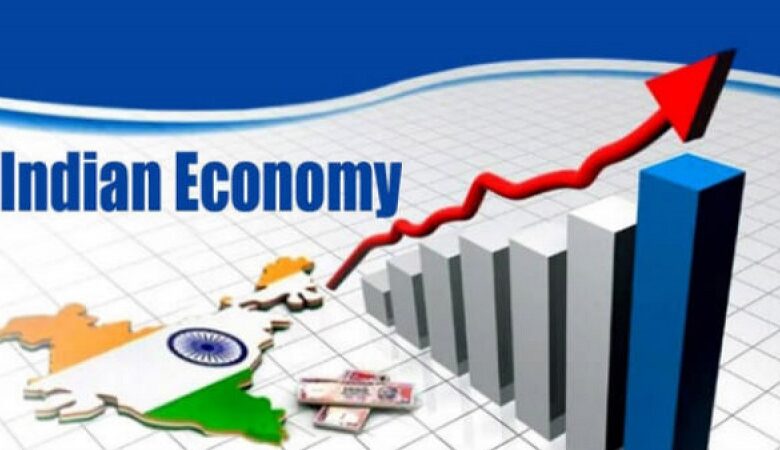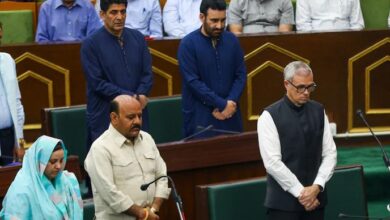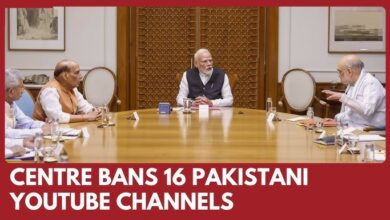India has managed to become a $2 trillion economy.

The rate of growth and expansion of the economy is one indicator to gauge the direction of change in the country today. The way the economy is changing today can be gauged by the fact that it took 60 years for India to become a $1 trillion economy, and by 2014, it had managed to become a $2 trillion economy. This equates to a $2 trillion-dollar economy in seven decades. However, in just nine years of present government, the Indian economy has grown to three and a half trillion dollars. In the last nine years, India’s economy has made a huge jump from number 10 to number 5. All this has happened in the midst of the biggest crisis in 100 years. In the period when the big economies of the world were stuck, India came out of the crisis and is moving forward at a fast pace.
The result of any policy can be seen in three stages. The first and natural result of any policy starts appearing in a short time. But the effects of the second and third phases are deep and far-reaching. To understand this, it becomes necessary to do a comparative study of the past. If we look at the earlier period, the economic policies of License Raj were implemented after independence, when the government became the controller and the environment of competition had ended. As a result, private industry was restricted to the level of MSMEs, and India remained backward and poorer than other countries around the world. At the second level, the impact of those policies became even more profound because consumption remained extremely low. As a result, the manufacturing sector suffered. The third effect was that the country could not create an environment conducive to innovation. As a result, no private sector jobs were created, and the youth became increasingly reliant on government jobs.
But in 2014, when there was a change in the country, there was a change in the thinking and working style of the government, in accordance with the expectations of the people. Whatever policies the government enacted, they all took a holistic approach. For example, during the first five years of the PM Awas Yojana, 1.5 crore families received pucca houses, a figure that has now risen to more than 4.5 crore. The majority of the houses are owned by women who have become millionaires in some way. Looking at the second level’s impact, this scheme has created thousands of new job opportunities in every village.
At the third level, this scheme has given people the opportunity to take risks while also increasing the confidence of the poor.
Be it the Mudra Yojana or the PM SVAMitva Yojana, social impact at all three levels is visible in the schemes. Be it DBT or facilities like electricity, water, and toilets, they have started a revolution on the ground. These schemes have given the poor a security cover filled with self-reliance as well as a sense of respect and security. These plans were scoffed at in the initial year because of traditional thinking, as many subjects were left to chance. But today, these schemes have given pace to India’s rapid development; and have become the basis to build a developed India.
Poor, Dalit, deprived, backward, tribal, general class, middle class—everyone is experiencing a visible change in their lives since the last nine years. In the country today, work is done in mission mode with a well-thought-out approach. Governance has evolved into service. Welfare of the poor has become the medium of our government, and instead of appeasement, satisfaction has become the basis of development. The poorest of the poor now have the assurance that they will receive what is rightfully theirs. This is social justice in its truest sense.
There are numerous such programmes, and they have had a significant impact on reducing poverty in India. According to an International Monetary Fund report, despite global pandemics such as COVID, the central government’s initiatives have nearly succeeded in eradicating extreme poverty in India. This is a transformation in which crores of families have benefited from programmes such as Ayushman Bharat, Ujjwala, Anna Yojana, One Nation-One Ration Card, low-cost medicines, free vaccination, and life insurance. This is a paradigm shift.
By combating corruption and forgery, schemes such as MGNREGA were altered, and beneficiaries received direct benefits. More than 90% of MGNREGA workers’ cards have been linked to Aadhaar, preventing Rs 40,000 crore from falling into the wrong hands. Technology has played an important role in this transformational journey. India now has modern technology, whereas in the past, it took decades for new technology to arrive.
The central government has now freed technology from government control. The emphasis in the country is on developing new technology that meets the needs of the country. Work on futuristic technology research and development is being carried out in mission mode. India is now growing at the fastest pace in the world. The manner in which India has developed its own 5G technology is being debated around the world.
It is the effect of technology that, because of JAM Trinity (Jan Dhan-Aadhaar-Mobile), 10 crore fake beneficiaries of government schemes have been thrown out, and benefits have reached the right person at the end. Aadhaar was given constitutional status as a result of this. More than 45 crore Jan Dhan bank accounts were opened in mission mode. DBT has so far transferred Rs 28 lakh crore to crores of beneficiaries. DBT means commission off, leakage off. There has been transparency in dozens of schemes and programmes as a result of it. Similarly, government procurement also used to be a major source of corruption in the country in the past. Even this, however, has changed. GeM is now used exclusively for government procurement. Tax-related arrangements have become faceless. A system like GST has checked black money.
“This Amrit Kaal of independence belongs to the efforts of all of us. When the power of every Indian and the hard work of every Indian are applied, then we will be able to fulfil the dream of a developed India as soon as possible. “The number of countrymen who tread with honesty is increasing, which guarantees a grand India. My countrymen are the guarantee of a grand India. I assure you that I believe in that.”
(Excerpts from PM Narendra Modi’s address at a conclave)
(This story has not been edited by News Mania staff and is published from a CBC Release-New India Samachar)






